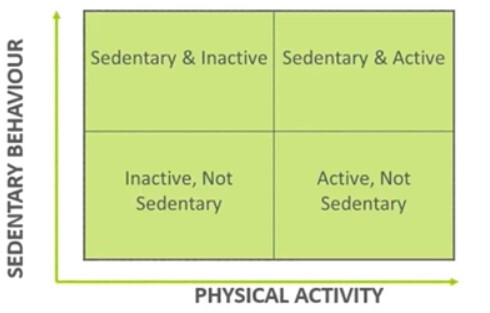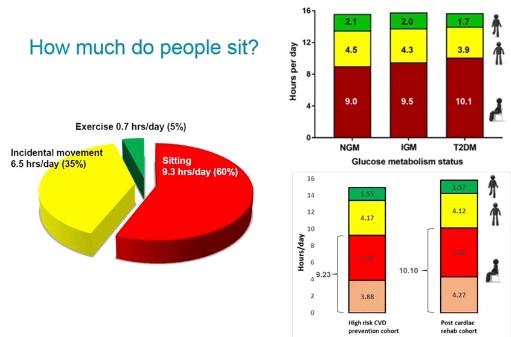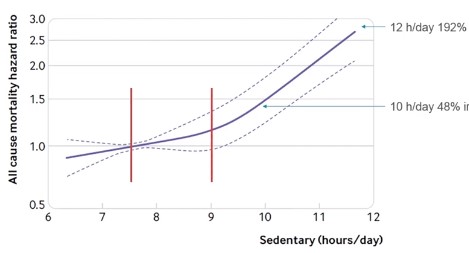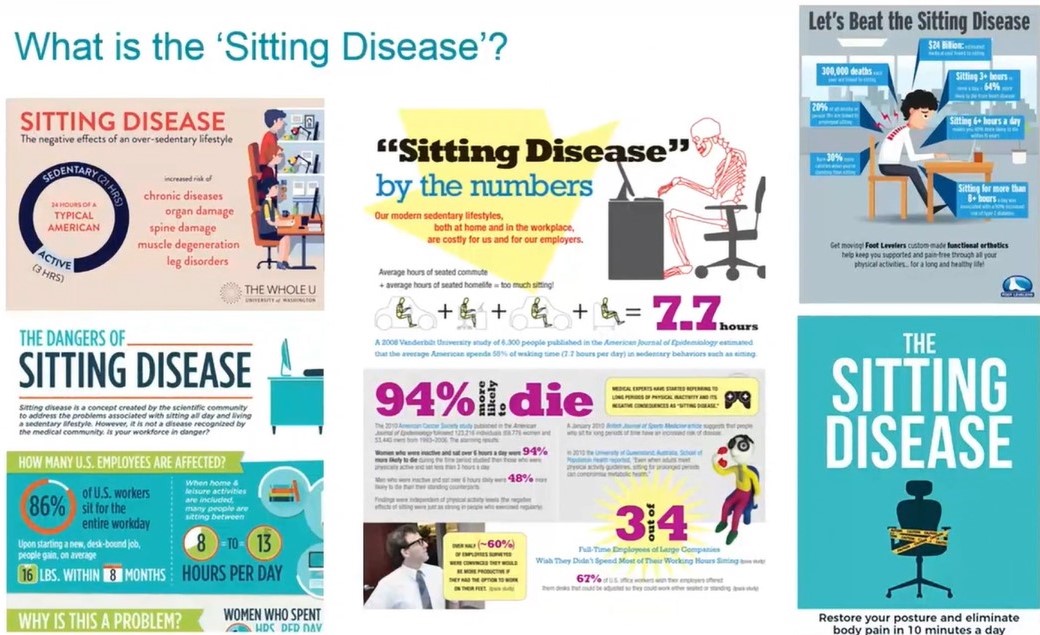At the latest National Prevention Conference, a special focus series was dedicated to hot topics in lifestyle approaches. As part of this series, Prof Charlotte Edwardson addressed “the sitting disease”; how much sitting is bad for our health and wellbeing and what can be done to combat it.

The sitting disease is not a lack of physical activity. Sedentary behaviour is any waking behaviour characterised by an energy expenditure less than or equal to 2.5 metabolic equivalents, while sitting, reclining or lying. People who do not meet the current physical activity levels (>150 mins/week of moderate physical activity) are considered physically inactive.

On average adults spend between 9-10 hours a day sitting which is over 60% of waking time. Data has shown that normal people spend around 9 hours a day sitting, while people with diabetes tend to spend only 1 hour more. Individuals who were in a high risk cvd cohort sat for around 9.2 hours a day and people who had left cardiac rehab spent 10 hours a day sitting.
The “Sitting Disease” can have many negative effects: Increased risk type 2 diabetes, cardiovascular events, cardiovascular mortality, depression, fatigue, lover cognitive function, blood glucose and more.

As the graph above shows the rate of mortality increases rapidly once you sit for more than 9 hours per day. There are many benefits to getting out of the chair every 20-30 minutes: this can can lower glucose, fatigue, prevent high blood pressure and more. Reducing sitting time by an hour a day can have a massive positive impact on your health. Just one hour in the reduction of workplace sitting can lead to 87% of staff feeling more energised, 71% of staff feeling more focused, 53% of staff feeling more engaged at work, 65% of staff reporting an improved quality of life and more.



Recent Comments